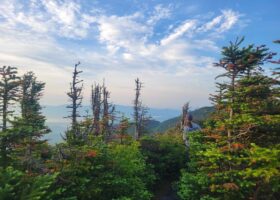
2024 Updates from Mount Mansfield and Mount Washington
The summer of 2024 marked VCE’s 33rd season working atop Mount Mansfield, and its first summer season banding Bicknell’s Thrush on Mount Washington since 2011.
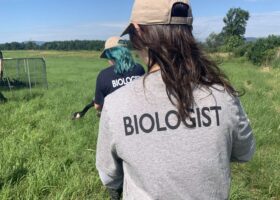
Weekly Reflections from a Summer at VCE
Working with VCE this summer has been immensely rewarding, seeing the animals I love in person and seeing how environmental disturbance affects them in real life. Birds hold a special place in my heart (I have a somewhat unattainable goal of seeing every species in North America before I die), and I’m proud to say I added 42 new birds to my Life List this summer.
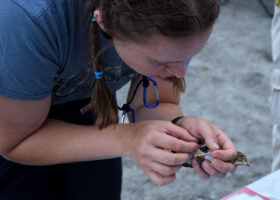
Mount Mansfield 2024 Midseason Report
With six trips up to Mount Mansfield’s peak and five trips to Mount Washington under our belts, VCE’s banding team is well into our summer 2024 montane bird banding and monitoring efforts! Battling rain, wind, chill, and scorching heat has been the baseline for this summer, but although perfect weather has been elusive, the birds we seek have not.
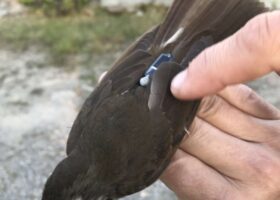
The Next Generation of Mt. Mansfield Ridgeline Research at VCE
With all the buzz on bees and other pollinators lately, you may be wondering if VCE is still studying birds. Are we ever! Amongst the plethora of continuing and new research, our Bicknell’s Thrush research program is going strong and has expanded to explore additional questions and build on past discoveries.
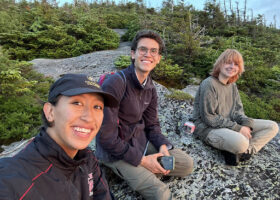
VCE Internship Supports the Future of Ecology
As an organization that strives to “unite people and science for conservation,” we recognize that to become stronger and more resilient, we must create a culture that embraces diversity and fosters inclusivity. With that goal in mind, VCE launched our Future Ecologists internship in 2022.
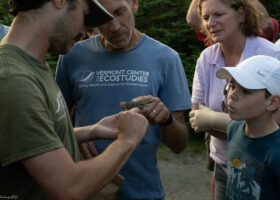
VCE Wraps 32 Years on Mansfield with a Flourish
It’s impossible to keep VCE biologists away from Mt. Mansfield’s ridgeline, even after 32 years. Following a summer of record wet weather, VCE’s annual fall pilgrimage to the mountain yielded 183 mist net captures, including a fat-encased female Blackpoll Warbler about to undertake her 5th nonstop transoceanic fall migration to northern South America.
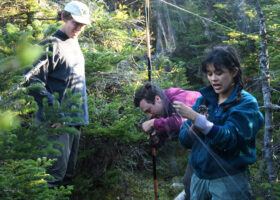
Mansfield’s Ridgeline Lures VCE Back for Season #32
One could argue that after 31 years of studying Mt. Mansfield’s ridgeline breeding birds, the time has come to seek new horizons. Well, sorry, that’s just not the VCE way. We launched season #32 on May 31, taking advantage of unseasonably summerlike weather to capture a total of 58 birds.
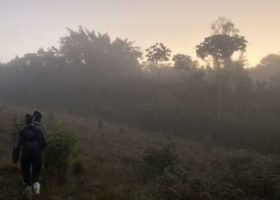
Further Adventures in the D.R.: On the Trailless Trail of the Bicknell’s Thrush
Part two of our DR trip brought us north to Reserva Privada Zorzal. This one-of-its-kind preserve hosts an entirely different assemblage of species and provided our crew with opportunities to attach a few more GPS tags.
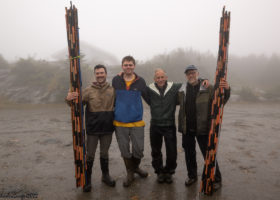
A Soggy Wrap to VCE’s 2022 Mansfield Season
VCE’s final Mt. Mansfield banding session of 2022 may have been a wash-out, but we captured a fat-encased Blackpoll Warbler ready for its astounding transoceanic southward flight, and we reflected on a highly successful season overall, with 17 GPS tags recovered from Bicknell’s Thrush.
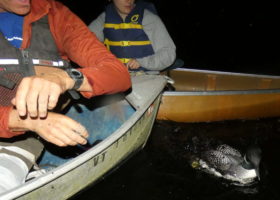
Banding Loons By Night
This summer, VCE’s loon conservation team spent two nights attempting (emphasis on attempting) to capture and band loons to learn more about their health and behavior. Despite a few misses, we caught loons on both Holland and Ewell Pond.
